PROGRAMMES & PARTNERSHIPS
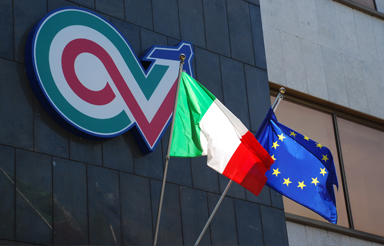

ENAV is one of the major European Air Navigation Service Providers, in terms of volume of controlled Airspace and movements as well as investments in technology innovation and R&D.
ENAV has an outstanding expertise in Air Traffic Management (ATM) operations and services, in the development and validation of new concepts and procedures, in working with the supply industry to design and engineer new systems to safely support the Air Traffic Controllers in their highly demanding tasks.
In line with its mission, ENAV has a leading role in the Mediterranean area and in neighbouring regions by promoting synergies with other Service Providers and supporting the implementation of the Single European Sky.
ENAV strategy and cooperation activities aim at developing synergies with the major ATM stakeholders to continuously improve the safety and quality of services provided for the benefit of all customers and finally the wider aviation community. In this connection, ENAV plays an important role in the development and setup of international partnerships and alliances, such as the A6 Group, a strategic alliance amongst some of the key Air Navigation Service Providers in Europe.
Since December 2014, ENAV, jointly with other industry partners, has established the SESAR Deployment Alliance, the consortium selected by the European Commission as the “SESAR Deployment Manager” responsible for the coordination and supervision of the upgrading of Europe’s Air Traffic Management infrastructure.
ENAV, through acknowledged experts, actively contributes in the work of international institutions and organizations such as EASA, ICAO, Eurocontrol as well as its trade association CANSO (Civil Air Navigation Services Organization). The international domain represents one of the key pillars for the future, experts promote and coordinate several international programmes, initiatives, large scale R&D and validation activities.

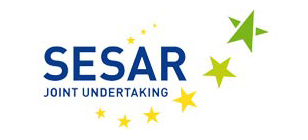
ENAV AND THE SESAR JOINT UNDERTAKING
ENAV AND THE SESAR JOINT
UNDERTAKING
VALIDATION INSIGHT
ENAV VALIDATION AND
SIMULATION ACTIVITIES
ENAV Validation Exercise on
Controlled Time of Arrival (CTA)
and Airborne Spacing (ASPA)
Sequencing & Merging (S&M)
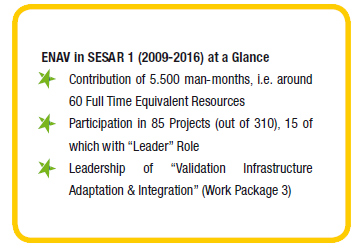

SESAR (Single European Sky ATM Research) is the technological pillar of the Single European Sky (SES) to modernise the European Air Traffic Management (ATM) infrastructure. ENAV has actively participated in the SESAR Programme since its very beginning and is strongly determined to support the successful outcome of the initiative. It is full member of the SESAR Joint Undertaking (SJU), the public-private partnership established to manage the SESAR Development Phase entrusted to validate the new ATM technologies and procedures to meet SES performance objectives.
Strongly convinced of the pivotal role of SJU in the SES framework to conduct a delivery-oriented and performance-driven Research & Innovation (R&I) Programme, ENAV has supported the initiative to extend the SJU mandate beyond 2016 in partnership with other stakeholders and its linked third parties.
ENAV has therefore renewed its firm willingness to continue its full participation in SJU and its active support to SESAR 2020 Programme until its completion in 2024, as a natural continuation of the work being conducted in the first Development Phase - SESAR 1.
ENAV in SESAR 1 (2009-2016) at a Glance
• Contribution of 5.500 man-months, i.e. around 60 Full Time Equivalent Resources
• Participation in 85 Projects (out of 310), 15 of which with “Leader” Role
• Leadership of “Validation Infrastructure Adaptation & Integration” (Work Package 3)
ENAV participation in SJU R&D activities entails a noteworthy effort in terms of human resources and technologies evaluated in 55 million Euros over SESAR 1 and expected 25 million Euros for the SESAR 2020 Programme.
To this end, ENAV relies on proven expertise in a variety of ATM domains and its Prototype Systems Centre supports full scale SESAR validation exercises through the use of Industrial and Simulation platforms in realistic pre-operational environments, meeting SESAR JU demand for shortening the gap between R&D and implementation of future ATM Systems.
ENAV membership in SESAR JU, besides confirming its leading role in shaping the future of ATM in Europe, also constitutes a unique opportunity to drive the change process towards the new generation of European ATM systems.
For further info, please contact:
Daniele Teotino (daniele.teotino@enav.it)
One of the key principles in SESAR is to validate mature concepts, procedures and technologies in an operational environment to assess the real-world benefits. Through the iterative validation of new SESAR solutions in an operational environment, the SJU and its members pave the way for the incremental introduction of new technologies and procedures.
In this context, ENAV significantly contributes to SESAR validation campaign by conducting several experimental activities addressing a number of operational concepts and supporting technologies, fully in line with the priorities identified in the European ATM Master Plan and ICAO Global Air Navigation Plan:
En-route/TMA
• Point Merge System
• Performance Based Navigation
• Arrival MANager (AMAN) Extended Horizon
• Free routing
• 4D Trajectory Management, including Ground-Ground Interoperability and validations on i4D concept + CTA
• Airborne SPAcing (ASPA) Sequencing & Merging
• Continuous Descent Approach
• CPDLC services & A/G Datalink
• Safety Nets (Short Term Conflict Alert - STCA)
Airport
• A-SMGCS Planning, Routing and Guidance functions
• D-TAXI services
• Low Visibility Procedures, including the use of Virtual Stop Bars
• Departure MANager (DMAN)
• Airport Safety Nets
• RNP-APCH and GBAS procedures
SESAR Validation relies on a “Release” approach which provides for an excellent framework for a more result-oriented approach to R&I. The aim of a SESAR Release is to present new or improved air traffic management solutions at a pre-industrialisation stage ready for deployment.
ENAV research is focused on all flight phases and relies on a stepwise approach from the study of concepts in ad-hoc experimental scenarios (2011-2013) to integrated and large validation campaigns (2014 onwards).
ENAV has played an active role in all SESAR Releases (2011-2016) conducting more than 30 validation exercises - including, for later V3 maturity phase, the execution of live/flight trials jointly with AIRBUS and Airline operators - on ENAV ad-hoc developed Industry-Based Verification & Validation Platforms (IBP) in the Airport, TMA and En-route domains over some Italian operational scenarios, such as Rome, Turin, Milan and Malpensa.
For further info, please contact:
Daniele Teotino (daniele.teotino@enav.it)
Since the beginning of SESAR Development phase, ENAV has led the Work Package 3 “Validation Infrastructure Adaptation and Integration”, designed to develop the European Verification and Validation Infrastructure on which the SESAR concept was validated.
ENAV leadership in this activity contributed to cooperation and support among SESAR Partners for the adaptation and integration of tools and prototypes that allowed the timely setting up and evolution of the V&V Platforms. Engineering activities have encompassed the design, development and integration of the V&VI with the System Under Test, in order to deploy verified and accepted V&V Platforms in line with Operational and System Projects’ needs in terms of preparation tools, Air Traffic Generators (Ground and Airborne), Data collection and Analysis tools and Interoperability solutions.
In SESAR 2020, ENAV will support the setting up and implementation of a System Engineering Data Management Framework (SE-DMF) to support effective collaborative requirements management and collection of all engineering data in the programme.
ENAV is equipped with two full-scale ATC simulation rooms, two main Pilot rooms, a Cockpit Simulator, a Tower Simulator and other facilities all interconnected to provide full scale Real Time simulations, shadow-mode and live trials. More specifically, ENAV Validation and Simulation Centre located in Rome ACC includes:
• SESAR IBP ATC platforms, including 4Flight Foundation and Coflight platforms
• SESAR Airborne segment composed Advanced Cockpit Simulator “ACS” and a set of virtualized cockpit simulators called iA/C, to manage high density realistic traffic environments for real time simulations and shadow mode exercises
• Fully fledged 270o Tower Simulator that will be used to test Remote Tower environments and gate-to-gate demonstrations
• Innovative IT infrastructure and Data Centre, called Virtual Computing Infrastructure (VCI) supporting private and Hybrid Cloud environments to host the Virtual Centre concept - all platforms and systems are running on VCI along verification, validation and deployment phases
• Link to the data-link and network infrastructures to support real scale Live trials
The Centre will also incorporate a new RPAS Simulation facility and the AIREON test bed in the course of 2016.
For further info, please contact:
Luigi Mazzucchelli (luigi.mazzucchelli@enav.it)
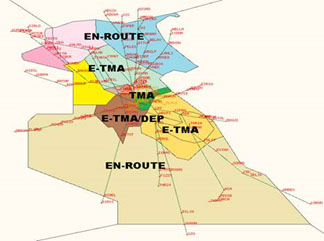
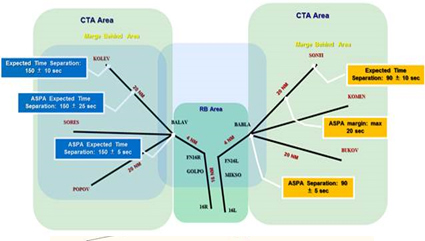
CTA & ASAS S&M Area
This SESAR Validation Exercise led by ENAV is considered as one of the most complex integration exercise in SESAR 1 addressing CTA operations, enabled by i4D, Airborne Separation ASPA S&M on an Extended Operational horizon.
In this exercise, the operational concepts were validated in a seamless integration scenario and the exercise was designed as a Real‐Time simulation based on Rome extended TMA airspace in a medium/medium density and complexity scenario. This simulation ran on a geographically distributed Validation infrastructure including ENAV Industry Based Platform, an airborne segment composed of the Airbus Cockpit Simulator (AIS) located in Toulouse, ENAV ACS/iA/C and ALENIA Military Simulator C27J Spartan interoperable by the SVS Technology (SopraSteria).
The exercise was composed of a realistic environment represented by Rome ACC‐E‐TMA/Milan and Padua areas, with significant traffic load using two simulation rooms (20 Controller Working Positions), two pilot rooms (23 Pilot Working Positions), three physical Airborne simulators and ENAV Virtualised Computing Infrastructure. EUROCONTROL's air traffic generator eATG complemented the Validation infrastructure.

SESAR DEMONSTRATION PROJECTS

Remote Airport Concept of
OperatioN (RACOOn)
FREE ROUTE ENVIRONMENTAL AND EFFICIENT
SOLUTIONS (FREE SOLUTIONS)
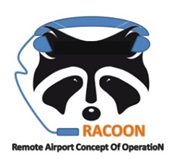
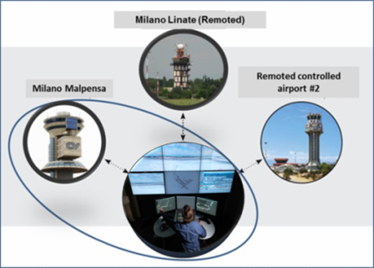
RACOON Demonstration Scenario
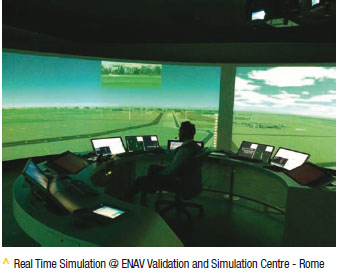
Remote Airport Concept of OperatioN (RACOOn)
SESAR Demonstration Project “RACOON” intends to demonstrate, in a live environment and along with real operations, the feasibility of single remote tower operations with low traffic volumes and, under given operational conditions and technological assumptions, how the solution can be extended to multiple airports. Additionally, the Project addresses RNP-APCH procedures and GNSS real time monitoring concept, singularly or combined with the Remote Tower solution.
Remote tower will be set up at Milano Malpensa airport, which will act as a Remote Tower Centre providing remote airport services combined with RNP-APCH procedures for the night-time operations to Milano Linate, as well as to a virtual additional airport.
The RACOON Project (2014-2016) is coordinated by ENAV (and its affiliates SICTA and Techno Sky), with the participation of keynote stakeholders such as Air France, NAV Canada, SEA, Searidge Technologies, IDS and Deep Blue plus the contribution of Alitalia and PRADA as supporting Partners.
The project, building on the SESAR experience from the recently available solution package on Remote Tower for Single Airport, will deploy the required technologies and procedures to operate the traffic by a remote location, with no degradation in the current levels of service and safety. The Project relies on a stepwise demonstration approach, using the execution of real-time simulations and shadow mode sessions as preparatory steps to the live flight trials.
RACOON Real Rime Simulations (RTS) were successfully completed in October 2015 at the ENAV Validation Centre in Rome using the tower simulator TBA3D. In line with the project approach, the RTS involved scenarios in which a single controller simultaneously managed, in low traffic conditions, Milan Linate and Milan Malpensa airports. Several runs were executed simulating day, night and low visibility conditions, as well as the inclusion of some non-nominal events, such as contingency situations, missed approach and two emergencies. RTS analysis focused on Safety and Human Performance aspects, two of the project’s key performance areas, and offered the project partners valuable operational feedback to proceed towards live trials in 2016.
For further info, please contact:
Daniele Teotino (daniele.teotino@enav.it)

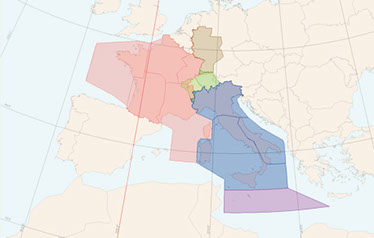
Free Solutions Reference Airspace
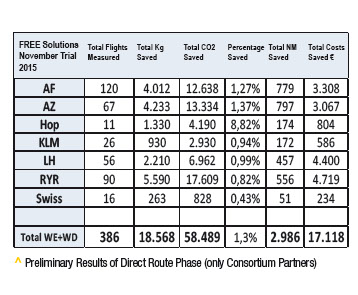
SESAR FREE Solutions project (Free Route Environmental and Efficient Solutions) is one of the large scale demonstration project led by ENAV, launched in September 2014, with the scope to demonstrate that European airspace is ready to move towards the free route implementation and the Airspace Users’ preferred business trajectories. The Free Solutions Consortium is composed by ENAV (project coordinator), Air France, Alitalia, DFS, DSNA, Eurocontrol/Network Manager, Lufthansa, MATS, Ryanair, Skyguide and Swiss, HOP! and KLM as third party of Air France, and SICTA and Techno Sky as affiliates of ENAV.
The Project is divided in three phases of flight trials: starting from the City Pairs phase, where a set of trajectories connecting two airports was tested and optimized, through a Direct Route phase in which the City Pairs trajectories were extended and/or connected to other optimized trajectories to permit the use by more Airspace Users and for several destinations; the third phase of the project has just ended; its scope is to assess the benefits of the usage of direct routes in a more extensive way, by creating a Direct Route Airspace, covering Zurich, Geneva, and partially Marseille area control centre, along with a Free Route Airspace over the Italian and Maltese area control centres, leaving also the Airspace User the possibility to freely plan a route according to their needs.
Results of the activities are encouraging: during the second phase of flight trials in November 2015, only from Consortium Airspace Users saved more than 18.000 Kg of fuel (more than 52.000 kg of CO2). In addition, the reference airspace was made available to all users.
The benefits listed in the table below are only related to data provided by the Consortium Airlines.
For further info, please contact:
Giancarlo Ferrara (giancarlo.ferrara.@enav.it)

REMOTELY PILOTED AERIAL SYSTEMS (RPAS)
REMOTELY PILOTED AERIAL SYSTEMS (RPAS)
MEDITERRANEAN ATM LIVE EXERCISE (MEDALE)
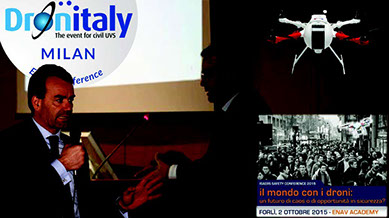
Cristiano Baldoni @ Remotely Piloted Aircraft System (RPAS) Events
The development of Remotely Piloted Aircraft System (RPAS) has opened a promising new chapter in the history of aviation, military applications have already demonstrated their operational effectiveness and are fully operational in several services. However, the real challenge will be the insertion of RPAS in the ATM. These systems are based on innovative technologies, offering solutions which may open new and improved civil/commercial applications, as well as improvements to the safety and efficiency of civil aviation without increase in air traffic controllers workload.
ENAV is strongly motivated to support the advent of drones, regardless their categories, business mission and modes of use. Drones are expected to fly within the Italian airspace, provided that there will be no compromise for the safety and regularity of circulation of any other user.
ENAV participates with a primary role in EU funded demonstration activities and has already carried out the MEDALE project, ESA DESIRE and DESIRE2.
ENAV R&D goals aim to accommodate RPAS with minimum impact on technology investments and on controllers’ workload; last but not least, ENAV is keen on having no impact on overall safety records and minimum application of special procedures, which would negatively affect the regularity of the traffic flow.
Further, ENAV aims at creating an environment where RPAS have to bear a minimum impact in terms of ATM related airborne equipment in order to comply with safety standards and security measures.
ENAV involvement in RPAS will continue in all related SESAR2020 R&D projects and solutions.
For further info, please contact:
Cristiano Baldoni (cristiano.baldoni@enav.it)
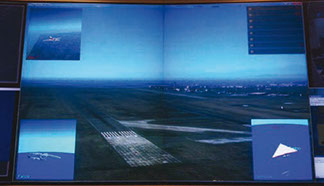
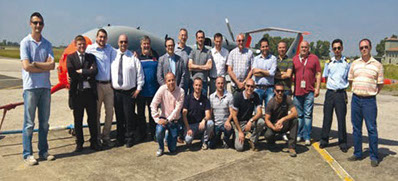
MEDALE Trial @ NATO Modelling & Simulation CoE - Rome
MEDALE Team
Mediterranean ATM Live Exercise (MedALE)
MedALE is one of the nine integrated remotely piloted aircraft system demonstration activities co-funded by the SESAR JU (2013-2015), that conducted first live flight trials of remotely piloted vehicles.
The Project included an initial phase of distributed simulation involving the NATO Modelling & Simulation Centre of Excellence of Rome. Three RPAS simulators were networked with the aim of evaluating a complex environment: the Sky-Y, integrating for the first time a Satellite Command & Control Datalink simulation provided by Thales Alenia Space Italia and ADS-B (Automatic Dependent Surveillance – Broadcast) in Turin; the Selex-ES Falco in Ronchi dei Legionari airport and the Nimbus C-Fly in Lombardore, Northern Italy.
To complete the scenario, ENAV simulated ATC (Air Traffic Control) stations (civil and military) and the “surrounding air traffic” generation and control systems. This phase provided useful information for multi RPAS operation to proceed with final live trials.
In June 2015, ENAV performed the first live flight trial using a remotely piloted vehicle to assess the feasibility RPAS integration into civil airspace. During the trial, ENAV personnel performed a live demonstration with air traffic controllers simulating a normal civil airspace procedure for Sky-Y RPAS. The instructions for route and altitude changes were designed to simulate typical interaction with normal air traffic in a bid to prevent conflict situations.
Moreover, the test saw emergency procedures, such as command and control link loss and loss of engine power. The RPAS was configured to support interaction between the pilot at the ground station as well as the civil air traffic controllers. This was aimed at demonstrating the possibility of managing an RPAS in nominal and emergency conditions.
The Sky-Y was equipped with a display showing surrounding real traffic information through the automatic dependent surveillance broadcast IN (ADS-B IN) to perform the trial prior certification of the Italian civil aviation authority (ENAC).
For further info, please contact:
Paolo Alviani (paolo.alviani@enav.it)

DATA-LINK COMMUNICATIONS
DATA-LINK COMMUNICATIONS
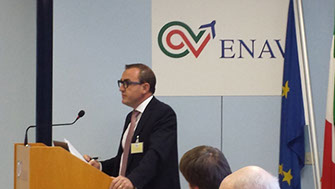
Roma ACC - Nicolas Warinsko (Deployment Manager Deputy Director) @ 2nd Stakeholder Consultation Workshop on New European Common Services Provision for PENS2 and DLS
The gradual evolution of aeronautical communications from analogic to digital is an actual process. Global and European plans for the modernisation of ATM exist and deal with this topic in depth, trying to manage it in a comprehensive, timely and coordinated way.
ICAO Global Air Navigation Plan and European ATM Master Plan identify communication roadmaps, with overall indications both on related infrastructure and timing.
Data-Link Communications represent one of the major technical enabler for the SESAR Concept of Operations; in particular the coordinated and efficient deployment of fundamental ATM Functions such as i4D and SWIM, found in Data-Link Communications availability the essential catalyst.
ENAV is proactively involved in several international initiatives and projects (in some of them with a leading role) on governance models as well as technical and operational aspects of the Data-Link environment:
- A6 Study on Data-Link Services (2013-2015)
- SESAR JU Capacity Study (VDL mode 2 Capacity and Performance Analysis)
- SESAR JU ELSA Study (VDL mode 2 Measurement, Analysis and Simulation campaign)
- Data-Link Services implementation development activities in BLUEMED FAB Region
- Implementation Projects in Innovative & Networks Executive Agency (INEA) CALLs 2014 and 2015
These activities have increasingly allowed ENAV to gain a comprehensive and structured experience in the Data-Link Communication domain that will pave the way to the wider platform of initiatives on which Europe will build its future ATM Data-Link Communication infrastructure.
For further info, please contact:
Gianguido Bragagnini (gianguido.bragagnini@enav.it)


A6 ALLIANCE
A6 ALLIANCE

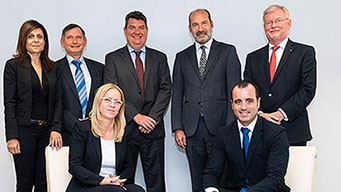
Members of the A6 Steering Group meet to sign the revised Memorandum of Cooperation
The A6 members, bound by a Memorandum of Co-operation, are full members of the SESAR Joint Undertaking, making the A6 uniquely placed to represent the interests of the ATM industry in the effective deployment of technologies and concepts developed through SESAR.
The Memorandum of Cooperation signed in 2011 by members of the original A6 Alliance (DSNA/France, DFS/Germany, ENAV/Italy, ENAIRE/Spain, NATS/UK as well as the Noracon Consortium including the ANSPs of Austria, Denmark, Estonia, Finland, Ireland, Norway and Sweden) was revised to enable even greater cooperation to help deliver SESAR extended to COOPANS Alliance (Austria, Croatia, Denmark, Ireland and Sweden) and the B4 consortium (ANSPs of Czech Republic, Lithuania, Poland and Slovakia). Further, PANSA, Poland’s ANSP, became full member of the A6 Alliance, too.
The revised agreement reflects changes to the external environment, as SESAR Phase 1 nears its conclusion, SESAR 2020 launches and shifts focus towards the operational deployment of technologies. Different groupings will participate in the A6 Alliance for various elements of the SESAR programme and the A6 Alliance is part of the Supervisory Board for the SESAR Deployment Manager.
In addition, the A6 has recently signed an agreement for closer cooperation with the Swiss ANSP Skyguide on Research & Development to be undertaken as part of SESAR 2020.
ENAV participates in A6 steering and working group levels contributing to the A6 high level objectives to proactively support the modernization process of the European ATM infrastructure which is the core objective of the SESAR.
Thanks to the solid relationship among partners, open to discussion and willing to reach common solutions for reaching the best benefits for everyone, the A6 managed to strengthen their position and represent an influencing voice for any process affecting the ATM business, while tightening up relationships with major stakeholders and with the European Commission.
For further info, please contact:
Cristiano Cantoni (cristiano.cantoni@enav.it)
Massimo Reale (massimo.reale@enav.it)

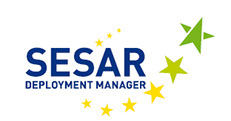
SESAR DEPLOYMENT MANAGER
SESAR DEPLOYMENT MANAGER
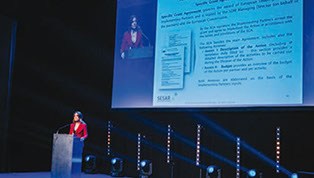
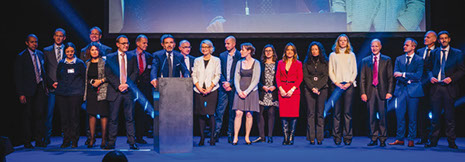
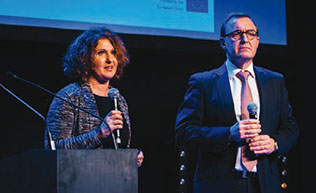
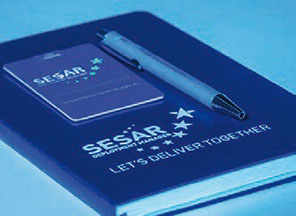
The A6, taking on the Deployment Management challenge, have recognized the importance to play a central role in the governance of the implementation of SESAR, jointly with the other major ATM operational stakeholders.
In this respect, they started coordination amongst ATM operational actors to lead the SESAR deployment phase. The A6 became promoters of the Industry cooperation by proactively seeking cooperation with Airspace users and Airports to jointly prepare a successful deployment manager governance proposal through the creation of the SESAR Deployment Alliance.
The SESAR Deployment Alliance (SDA) was appointed in December 2014 as SESAR Deployment Manager (SDM) by the European Commission. The SDM is a partnership of leading airlines (Air France-KLM group, easyJet, IAG and Lufthansa Group), airports (SDAG - SESAR-related Deployment Airport Group) and air navigation service providers – DFS (Germany), DSNA (France), ENAIRE (Spain), ENAV (Italy) and NATS (UK), working with PANSA (Poland) and a group representing ANSPs members of the COOPANS alliance including AustroControl (Austria), Croatia Control, IAA (Ireland), LFV (Sweden) and Naviair (Denmark). They are committed to the principle of the Single European Sky and to deploying the technologies with the aim to create customer and environmental efficiencies.
The SESAR Deployment Manager (SDM) is the entity that synchronises and coordinates the modernisation of Europe’s air traffic management system under the political oversight of the European Commission. The main task of the SESAR Deployment Manager is to develop, submit to the European Commission for its approval and execute the Deployment Programme, a project view strictly drawn from the Pilot Common Project (PCP) set by Commission Implementing Regulation (EU) No 716/2014, as well as any subsequent Common Projects in future regulations. Through the Deployment Programme, the SDM will ensure efficient synchronisation and coordination of implementation projects required to implement the PCP and the related investments.
ENAV is very active within the SDM with a two-fold role:
- As SESAR Deployment Manager: ENAV is one of the members the consortium, contributing directly to SDM success thanks to the expertise of ENAV managers and staff covering roles of responsibility within SDM governance;
- As Implementing Partner: ENAV successfully participated in the 2014 Call for Proposals of the European funding programme - Connecting Europe Facilities (CEF) – submitting projects related to the SDM Deployment Programme and becoming member of the Framework Partnership Agreement.
For further info, please contact:
Cristiano Cantoni (cristiano.cantoni@enav.it)
Massimo Reale (massimo.reale@enav.it)

COFLIGHT
COFLIGHT
COFLIGHT AS A SERVICE
ERATO
The Coflight-eFDP System is a next generation Flight Data Processing System designed to meet the needs of European Air Navigation Service Providers for the next decades, satisfying the need for the harmonisation and interoperability of air traffic management systems in Europe and facilitating the integration of advanced tools in the global ATM system.
The system will replace the legacy flight data processing system that currently exists with a very advanced new generation system, with no disruption to service through a staged implementation plan. The system, harmonised and interoperable on a European scale, is able to support air traffic control operations for the next 20 years, for the benefit of all air transport stakeholders. It contains features that will satisfy the general needs of ATM in Europe and with an open design that will allow its integration in any particular air navigation services provider’s environment.
Coflight Key Features
- Coflight supports the following missions:
-
- flight data services for civil ATC;
-
- flight data services for military ATC;
-
- flight data services for both civil and military ATC (the so called co-localised missions).
The Civil Air Traffic Control is the main mission that the system shall support. In this mission, the system shall provide services for En-route ACCs, Approach ACCs and to Aerodrome Control Functions.
In the military Air Traffic Control mission, the system shall provide services to military Air Traffic Controllers for the control of military flights, in a manner similar to the civil ATC mission. The system shall manage both IFR and VFR flights, providing specific services to VFR flights.
Coflight supports different states for the aforementioned missions:
- operational state;
- training state, for training air traffic controllers and supervisors;
- testing state, for testing new software versions, new operational procedures and interoperability capacities.
Coflight brings the following state of the art functional improvements to flight data processing systems:
- 4D based trajectory predictions, advanced aircraft modelling, considering of aircraft intents, downlink of aircraft parameters, airport and traffic flow constraints and meteorological data improved coordination with the integration of all the letters of agreement among Centres and the application of Flexible Use of Airspace (FUA) principles;
- integration of data provided by air/ground datalink applications;
- highly reactive management of airspace and route structures, dynamic adjustment of sector boundaries to balance ATC capacity and traffic load, and automatic calculation of the consequences on flights.
The system includes support for the emerging European interoperability standards including:
- support for seamless interoperability between ATS providers, IFPS/CFMU, pilots, aircraft operators and airports;
- integration of en-route and approach with sequencing tools;
- introduction of multi-sector planning tools;
- improvement of coordination procedures with conflict detection tools;
- acceptance of direct routes through multiple Centres.
With the aim to reduce maintenance costs and to facilitate developments, the system architecture is model driven (MDA) and comply with recognised standards (CORBA, object oriented languages, UML modelling tools).
This new highly fault-tolerant architecture complies with the Safety Regulatory Requirements applicable to CNS/ATM systems (2096/2005 and 482/2008 European regulations).
The basic philosophy of the implementation programme is to reduce risks to a minimum by adopting an incremental development strategy. The level of change at each step will be limited, enabling phased integration in the overall National and European ATM systems, rapid corrections in the case of errors and a quick investment returns.
The following figure shows the Coflight Product Roadmap:
- V1, delivered in 2010, provided a new CORBA based middleware, the architectural infrastructure for the whole ATM system and a basic version of the new FDPS;
- V2, delivered in May 2013, provided the completion of the functional requirements;
- V2R1, delivered in July 2014, is including an operational requirements’ update;
- V3, delivered in 2015, provides the new ED133 compliant interoperability mechanism and integration with aircrafts through Data-Link
- V3R1, expected for Oct 2017, will be the first version to be used in operational service.
For further info, please contact:
Claudio Cannavicci (claudio.cannavicci@enav.it)
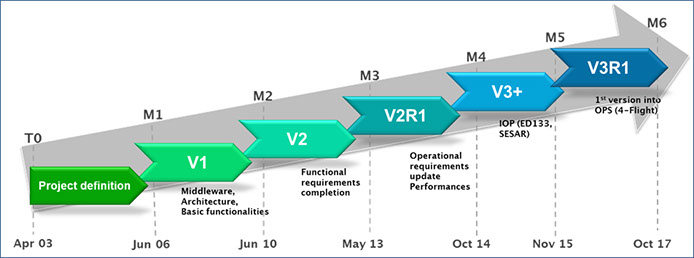
Since 2014, ENAV - jointly with DSNA, MATS and Skyguide - conducted a feasibility study with the objective of delivering remote Flight Data Processing service to ANSPs for enhanced European ATM Performance.
The Coflight as a Service (CAAS) programme evolved in a close collaboration process to ensure customers’ needs addressing not only the technical and operational aspects, but also the legal and economic dimension. Furthermore, this undertaking is designed to have an iterative approach taking into account the global SESAR SWIM architecture.
The CAAS roadmap includes, in the second half of 2016, a trial involving the four Partners will complete the feasibility study.
By using Coflight, ANSPs will be able to deliver optimum performance in air navigation services, receiving remotely provided
- 4D-trajectory prediction, a trajectory always close to the actual behavior of the aircraft
- Vertical profile management using all the Requested Flight Level (RFL) as filed in the initial flight plan
- Modification of routes
- Monitoring alerts for flight data discrepancies
- Interoperability functions
- Datalink capabilities
- Gate-to-gate eFDP
- Flexible use of airspace
For further information, please contact:
Claudio Cannavicci (claudio.cannavicci@enav.it)
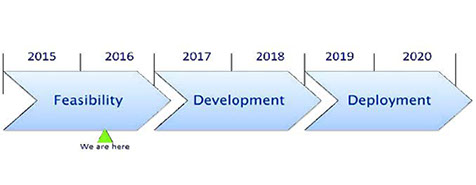
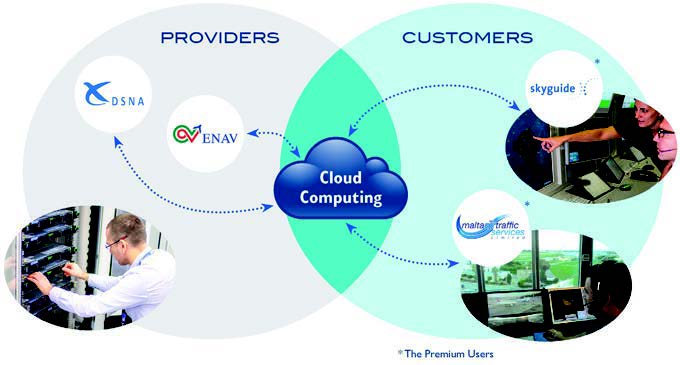
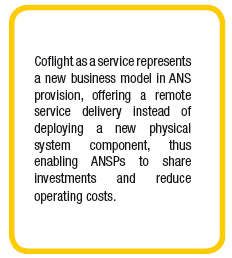
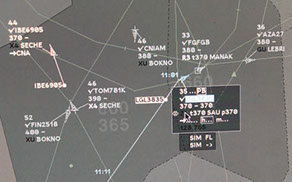
Air Traffic Controllers screen with ERATO
INNOVATIVE
MID-TERM CONFLICT DETECTION (MTCD),
“WHAT IF”, MONITORING ALERT (MONA),
TOOLS IN AN ELECTRONIC ENVIRONMENT
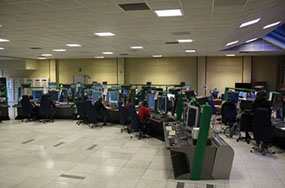
Brindisi ACC: Operations Room
ERATO (EN-ROUTE AIR TRAFFIC ORGANIZER)
ERATO is a set of modern tools for air traffic controllers developed by ENAV and DSNA (French Air Navigation Service Provider) which integrate innovative functions providing helpful assistance in
conflict resolution in an electronic environment.
ERATO is much more than simply a Mid-Term Conflict Detection (MTCD) tool: the system also includes parametre simulation (“What if ” concept) and monitoring alert (MONA) tools.
Real time simulations in Italy and live trials in France have demonstrated significant benefits that ERATO can bring in terms of safety and capacity.
ERATO Electronic Environment has been implemented since December 2015 in Brest ACC. Further deployments are planned in ENAV Brindisi ACC and DSNA Bordeaux ACC by the end of 2016.
ERATO will be gradually integrated in ENAV and DSNA’s new generation ATM system, the 4-Flight programme.
For further information, please contact:
Claudio Cannavicci (claudio.cannavicci@enav.it)
ERATO is designed to support controller decision-making helping them to work in a safer and more efficient way
ENAV looks at satellite technology as one of the main enabler in the future CNS/ATM (Communication, Navigation, Surveillance / Air Traffic Management) scenario, where the capability of a systems to support continental/global services, joining and harmonizing the efforts of multiple stakeholders, will be a key factor for success.
ENAV has joined satellite initiatives in the CNS field since nineties by providing financial contribution and expertise as ANSP in the EGNOS Programme (i.e. the first European step in satellite navigation).
SURVEILLANCE
Communication
COMMUNICATIONS
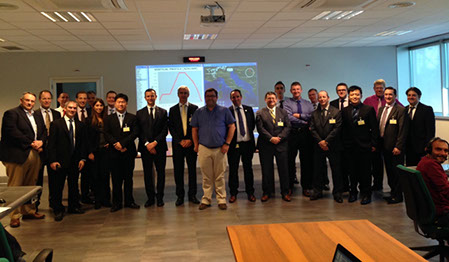
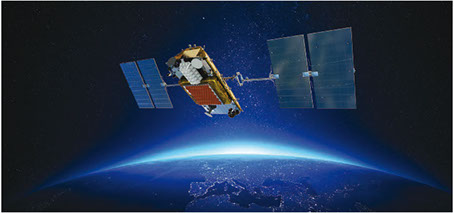
Aireon TIM meeting – Rome 11-12/11/2015
For further information, please contact:
Claudio Rinaldi (claudio.rinaldi@enav.it)
Aireon is a Company to design, finance, procure, deploy and operate a global, satellite-basedaviation
monitoring service utilizing ADS-B technology. ENAV participate in AIREON with 12,5% of shares, other shareholders being
NAVCANADA, Iridium Communications Inc., IAA and Naviair. Aireon will take benefit of the world’s furthest reaching network, being Aireon special ADS-B receiver payloads to be hosted on each of the Iridium Next 66 LEO operational satellites constellation. Once deployed this constellation in 2017, the Aireon design will deliver the first-ever space-based global aviation surveillance system. Thanks to Aireon service, the ADS-B message transmitted by the aircraft and including information on its position as accurate as calculated onboard could reach an ANSPs wherever the aircraft is flying on the globe. Aireon data are expected to have a strong positive impact on air operations both by allowing the most efficient surveillance in areas not covered by radar and by giving all the benefits by a further surveillance layer in areas already radar-covered. Moreover, the possibility for an ANSP of performing
SURVEILLANCE
Aireon Technical Interchange Meeting - Rome November 2015 surveillance in every airspace around the world will create new opportunities for future air traffic management optimisation and value-added services. ENAV participation in Aireon is also intended to bring the development of this Satellite ADS-B service all the experience and skills of one of the major European ANSP as well as to develop synergies with other international initiatives in the Mediterranean and other areas like South-Eastern Asia, where, in Kuala Lumpur, operates the subsidiary “ENAV Asia Pacific”.
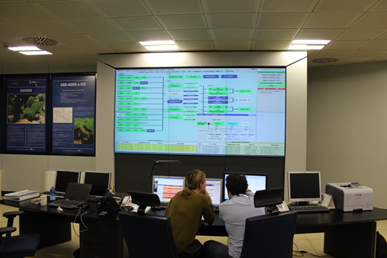
Ciampino MCC Room
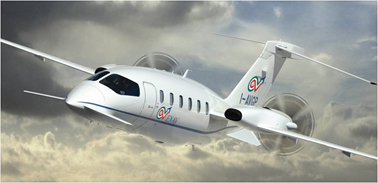
ENAV Flight Inspection Aircraft equipped for EGNOS procedure flight validation
NAVIGATION
EGNOS is the European Satellite Based Augmentation System (today augmenting GPS), able to support approach procedures with vertical guidance (LPV250 and LPV200) allowing reduced minimum decision height, set at up to 250-200 feet. This reduction allows, among others, increased runway capacity, permitting landings under conditions of poor visibility, even in airports not equipped with ILS or when ILS service is unavailable.
EGNOS Signal in Space was certified and declared available by the European Commission for Safety of Life (SoL) application in its coverage area in March 2011. In December 2012 ENAV, among the first ANSPs in Europe, designed and published the first LPV procedure in Italy in Milano Linate.
Other procedures were then published for Ciampino, Fiumicino, Malpensa, Bologna, Venice and Olbia airports for a total of 14 Italian RWYs today served by LPV procedures. Being its flight inspection fleet equipped with EGNOS certified capabilities, ENAV is also involved at international level in both design and flight validation of procedures outside Italy.
During the EGNOS system design and implementation as well as EGNOS service certification and introduction, experts from ENAV participated in the definition of Mission and Operational requirements. Such participation, still ongoing in view of the next version of the EGNOS system, is provided both at Committee/Board/Panel and/or Working Group/Task Force level within the ICAO, ESA, EUROCONTROL, EC and GSA working arrangements dealing with Satellite Navigation matters. The experience gained in GNSS allows ENAV involvement in national and international projects for EGNOS services introduction and EGNOS system evolutions. Among them, projects promoted by the European GNSS Agency (GSA) like Beyond and BLUE GNSS.
BLUEGNSS is the project, coordinated by ENAV and involving HCAA (Greece), MATS (Malta), DCAC (Cyprus) and IDS (industrial partner), developed in the framework of the Horizon 2020 Research and Development activities. It has the objective to implement RNP APCH on airports belonging to the BLUE MED FAB, training airspace procedure designers, and implementing the first regional GNSS Monitoring network.
This last one is a key innovation topic of the project, based on the work performed by ICAO NSP on this topic, the regional network will allow economic savings for States that want to implement GNSS monitoring for formal GNSS acceptance.
Further main roles played by ENAV in EGNOS are related to the two Mission Control Centre (MCC) of the EGNOS system in Rome ACC premises as well as its membership in ESSP (European Satellite Services Provider).
ESSP was founded as an European Economic Interest Grouping (EEIG) on 2001. In 2008 ESSP was transformed into a new company of limited liability “ESSP SAS” to be awarded by the European Commission (acting as owner of the EGNOS system since April 2009) with the first contract for the operations of the EGNOS Open Service (OS) and the service provision of the EGNOS SoL service and the European Data Access Service (EDAS) for EGNOS commercial applications.
Shareholders of ESSP with ENAV are other 6 Key European ANSPs. Taking benefits of its proved excellence in EGNOS service provision, ESSP SAS, following a competitive bid, was awarded in 2014 by EC/GSA with the contract to provide the EGNOS services up to 2021.
Since 2013, becoming a member of Aireon LLC, ENAV has enlarged its involvement in satellite technologies to include the surveillance domain through satellite ADS-B (Automatic Dependent Surveillance-Broadcast).
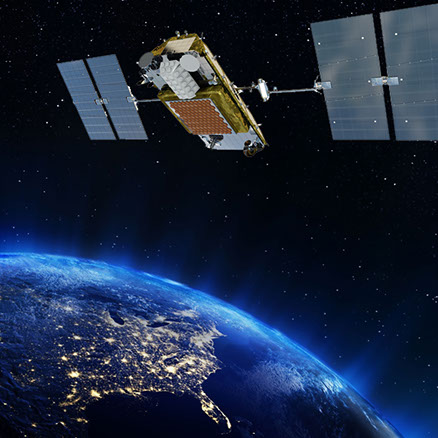
IRIS is the ESA Programme aiming to develop a satellite-based air–ground communication system for Air Traffic Management (ATM).
The Iris Service starts with the Phase 1 (also known as Iris Precursor) to support Controller Pilot Data Link Communications (CPDLC) in the short term and Initial 4D in the medium term; it will act as a complement to VDL M2 over ATN.
In the longer term the vision is that the Iris service will evolve to Phase 2 to support Full 4D and operate in a “multi-link” environment with future terrestrial datalinks, providing a higher performance and highly secure service. By 2018, Iris Precursor is expected to support CPDLC in Europe and open the door to initial 4D flight path control, with the exchange of EPPs (Extended Projected Profiles) coming directly from avionic systems.
The core characteristic of i4D in fact is making sure that trajectories are always synchronised between air and ground, which will enable more efficient management of traffic and certainty of flight profiles.
For further information, please contact:
Claudio Rinaldi (claudio.rinaldi@enav.it)



BLUEMED
BLUEMED
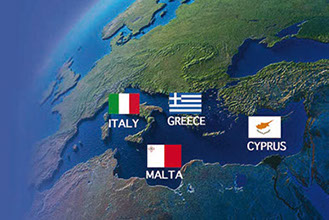
The Single European Sky regulatory framework is now experiencing the full implementation of Functional Airspace Blocks (FABs) by the EU Member States.
A Functional Airspace Block is a portion of airspace where air traffic is managed regardless of existing national boundaries, taking into account operational and technical requirements and considering Airspace User’s needs at the centre of service provision.
Within an established FAB, Air Traffic Management is harmonised among the Partners, limiting costs, improving operational capacity, reducing the environmental impact of operations, while Safety levels are preserved, if not increased .
The BLUE MED FAB project is the European central/south-eastern FAB initiative. It represents the natural European gate dedicated to air traffic flows coming from Africa and the Middle-East, namely among the regions with the prospective fast growing trend in the next future.
The BLUE MED Partners are the EU Member States of Cyprus, Greece, Italy and Malta, and in the last years also Albania, Tunisia and Egypt contributed as Associated Partners , while Lebanon and the Hashemite Kingdom of Jordan participated actively as Observers. More recently, the Civil Aviation Authority of Israel signed a Memorandum of Understanding with the BLUE MED FAB for its involvement in the initiative.
The BLUE MED FAB is open to the participation of other States who are interested in cooperating in a wide range of activities, allowing the creation of benefits generated by the integration of operational and technical solutions developed in the Mediterranean area.
Today, based on a Feasibility Study conducted between 2007 and 2008 and a Definition Phase developed from 2009 to 2012 - during which the validity of the Project as well as the identification of the technical, regulatory, Safety/Security details (also showing the expected economic results) were demonstrated, BLUE MED FAB, coordinated by ENAV, has undertaken its Implementation Phase, a real coordinated deployment initiative in which operational and technical improvements identified in the Definition Phase will be delivered according to the agreed roadmap, which also includes collaboration and cooperation with the European SESAR Deployment initiative and the ATM Industry.
The Implementation Phase is progressively determining a paramount shift in the organisation of Air Navigation Services over the Mediterranean basin, bringing competition advantages in the area and benefits for the Airspace Users in terms of enhanced efficiency of services, reduced delays and costs, with lowered environmental impact, always under the umbrella of improved Safety levels. All these benefits are also being coordinated with other FABs, through an inter-FAB cooperation platform which is trying to highlight best practices raising from FABs.
In line with the SES esprit, the coming years will see the fulfilment of FAB benefits for the Mediterranean Area, not only limited to the airspaces of the BLUE MED Member States, but also extended to neighbouring non-EU Countries, willing to share and integrate their experiences and practices in the Air Traffic Management.
For further info, please contact:
Claudio Cannavicci (claudio.cannavicci@enav.it)

